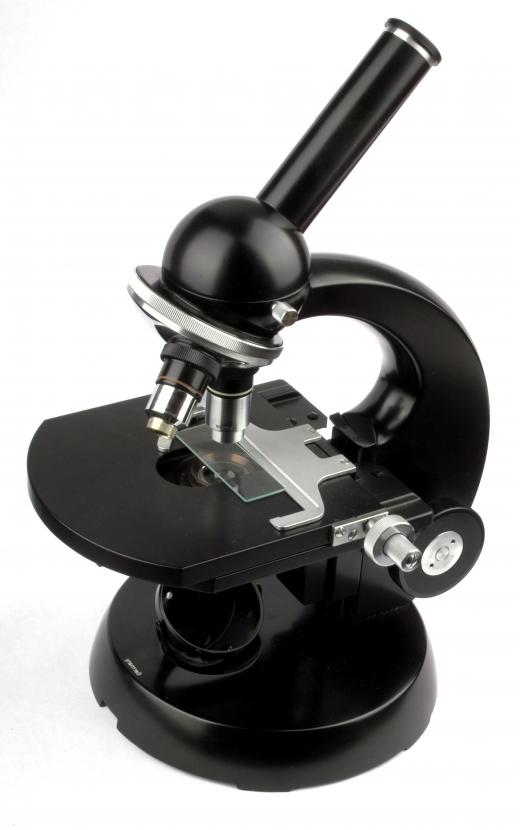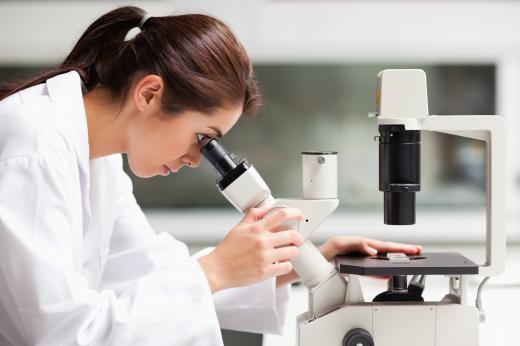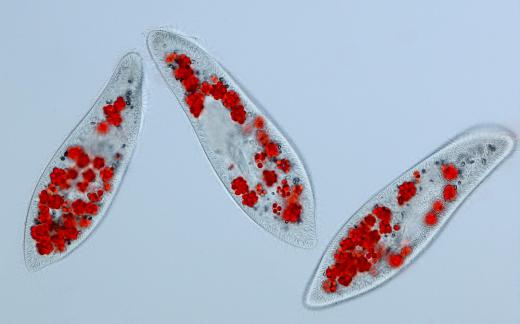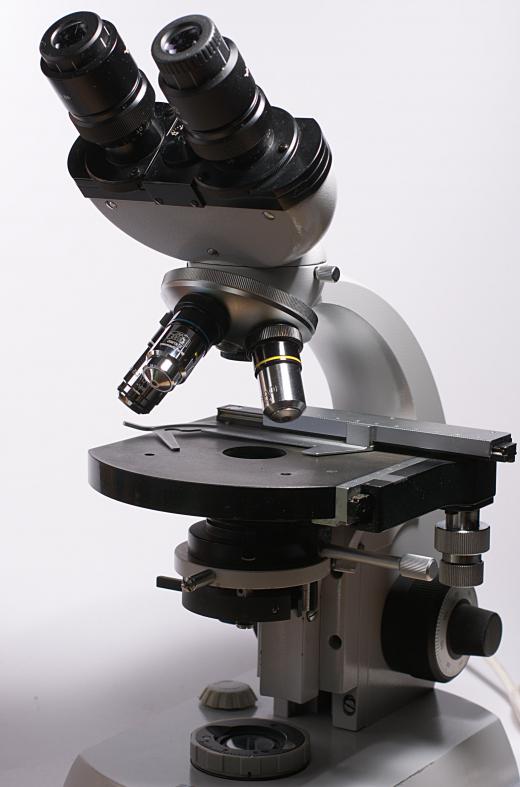How do I Use a Microscope?
In order to use a microscope, place it on a flat surface with sufficient working space. If the microscope has a power cord, plug it into the electrical socket. On the other hand, if it doesn't possess a power cord, the microscope will use a mirror to focus natural light. People can use a microscope by following basic instructions.
Depending on the type of microscope used, turn on its light source. Next, adjust its diaphragm, the rotating disk located beneath the microscope stage, to its largest diameter so that the greatest amount of light can flow through the microscope. Turn the nosepiece to the lowest power objective so that a wide field of view is achieved. After this is done, take a microscope slide and put it on the stage. The slide can be arranged beneath the stage clips or attached to the mechanical stage.

Use the large coarse focus knob to bring the slide into focus. It may be necessary to move the slide around a bit in order to center it well. Next, use the small fine focus knob to perfect the focus of the specimen. Adjust the diaphragm to achieve the best possible lighting. The goal is to have the clearest image possible of the specimen that needs to be examined.

When someone wishes to use a microscope, she should peer through the eyepiece with one eye and keep the other eye open to reduce eye strain. The glass part of the lenses should never be touched with the fingers. Lens paper should be used to clean the lenses of the microscope.
Microscopes are used to closely observe cells and microscopic life. They are used in science and medical labs, classrooms, and even in the home. By using a microscope, humans can enlarge the images of small objects and organisms so that it is possible to study their structure and how they function. Microscopes are relatively simple to use and can be purchased in a variety of price ranges.

Before the invention of the microscope, people were unaware of the existence of organisms smaller than what the human eye can see. Eventually, 17th century scientists like Robert Hooke designed a microscope that magnified small objects. To make this early microscope, Hooke used two lenses and placed them at opposite ends of a tube. He attached the tube to a stand and used an oil lamp as a light source.

Hooke decided to use a mirror to focus light on the object he wished to examine. Some of the first objects he studied with his microscope were fleas and other tiny insects. Later on, scientists used microscopes to examine microorganisms, tiny life forms that are invisible to the human eye. Today, students in classrooms throughout the world learn how to use a microscope and gain a glimpse into the lives of microscopic creatures.
AS FEATURED ON:
AS FEATURED ON:















Discuss this Article
Post your comments